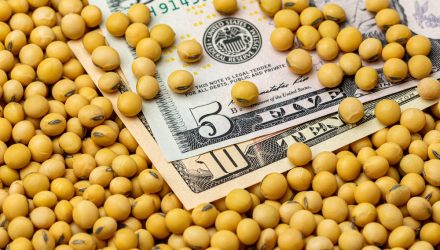Soybean investors are having to deal with the push and pull dichotomy of South America as different countries will be experiencing various production outputs. Nonetheless, this offers traders the volatility they desire and a test for long-term investors to see whether they can stomach the fluxing of prices.
Of course, one of the driving factors for soybean prices will be weather — that’s of particular importance in South America given its dominance in the soybean market. Certain regions in South America will have varying crop yields versus others, highlighting that push-pull dynamic.
“South American countries, which account for about 55% of the world’s soybean supply, are experiencing varying harvest expectations this crop season,” Farm Doc Daily noted. “While Brazil is on the verge of breaking a record in soybean production, Argentina will have its worst harvest in more than two decades. The contrasts in yields result from the effects of La Niña.”
“Overall, South American soybean production still is expected to exceed the previous year, but to a lesser extent than initially thought,” Farm Doc Daily added. “The consequences of a larger soybean crop in South America, combined with the potential for a larger U.S. soybean crop in the fall, could tend to push prices down – a trend already evident in the commodity market in 2023, which could become more pronounced in the coming months.”
Production in South America to Exceed 2022
Given the confluence of factors affecting soybean prices, Farm Doc Daily did note that overall, production will be higher for 2023. Of course, that can all change given the fickle nature of climate, but fluctuating prices are all part and parcel when it comes to investing in agricultural commodities.
“Overall, South American soybean production is expected to exceed the previous year’s level, but to a lesser extent than previously anticipated,” Farm Doc Daily added. “Unlike the last crop season, the effects of La Niña this season were more concentrated in the extreme South of South America – Argentina, Uruguay and Rio Grande do Sul state, in Brazil.”
Investors looking to add soybean exposure as a non-correlated asset to their traditional portfolio can look at the Teucrium Soybean Fund (SOYB). SOYB can essentially provide similar exposure to what investors could obtain by trading in soybean futures contracts themselves.
For more news, information, and analysis, visit the Commodities Channel.

